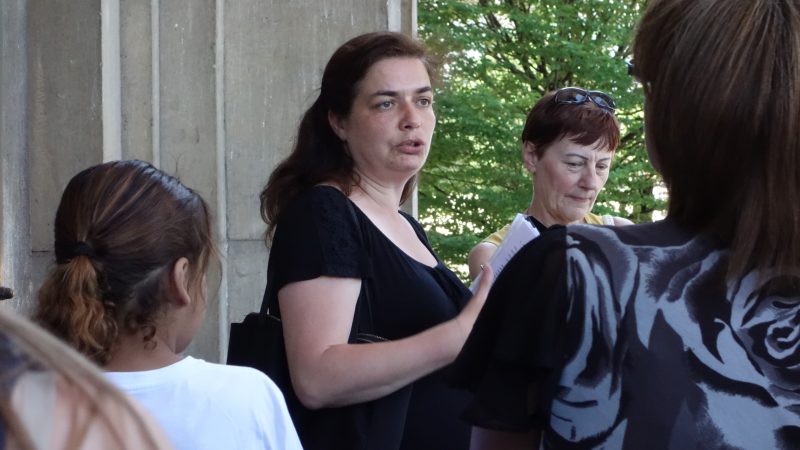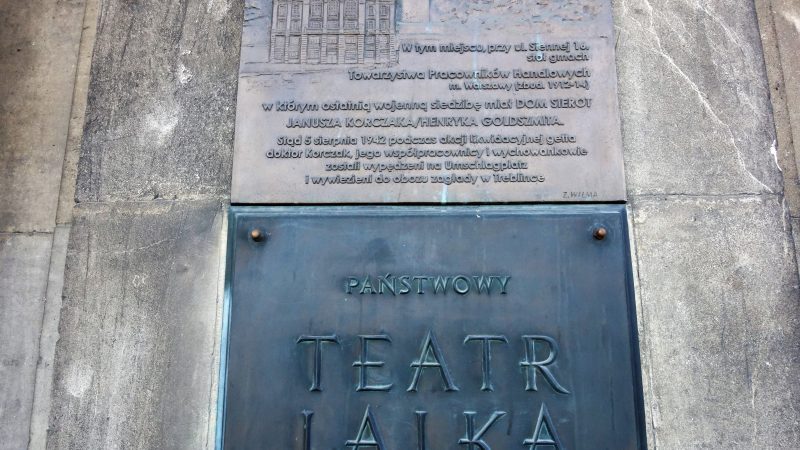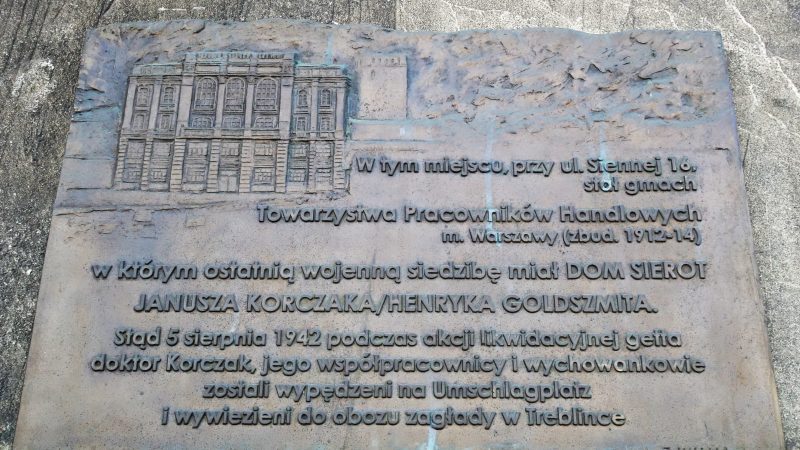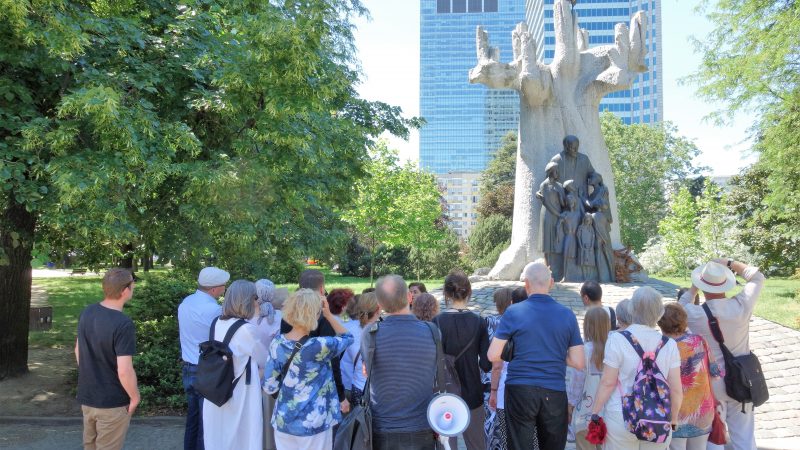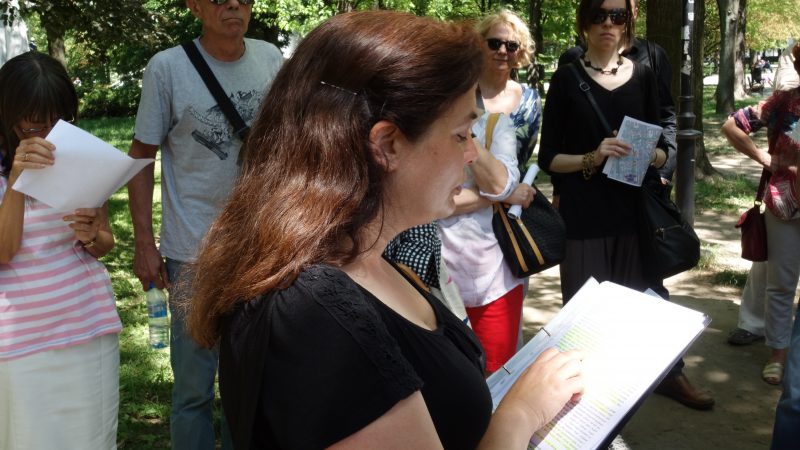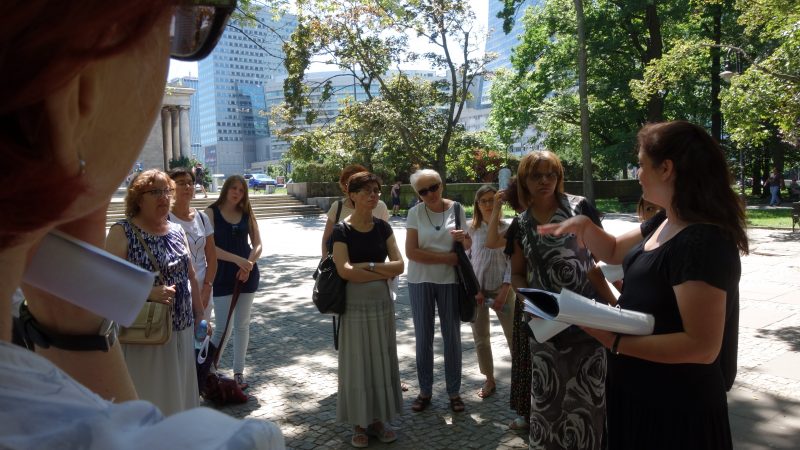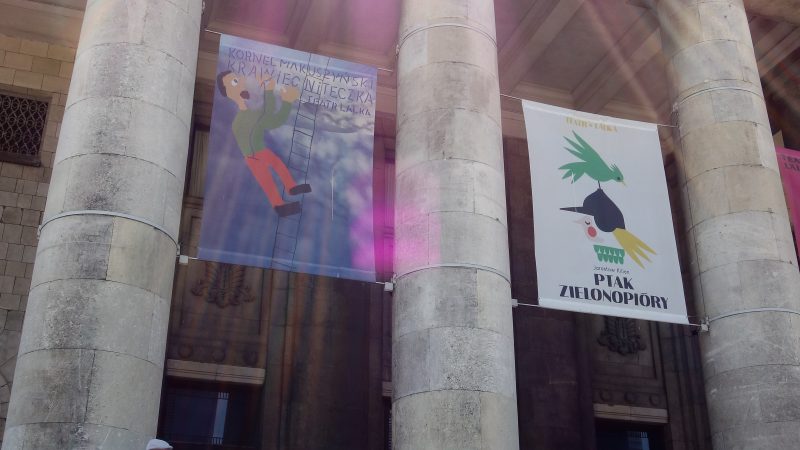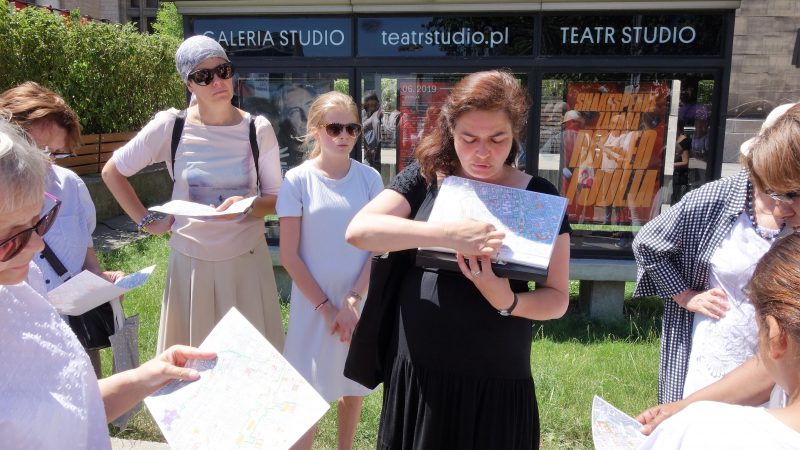A Varsavianist stroll along the “nice, clean, and peaceful” Sienna Street
Another Varsavianist stroll organized by the Warsaw Ghetto Museum attracted many enthusiasts of the capital’s history interested in Jewish culture. It was led by Jagna Kofta along Sienna Street which before the war and during the occupation was an important part of the so-called Jewish Warsaw.
The gathered people went from the Studio Theater in the Palace of Culture and Science, first stopping near the Lalka Puppet and Actor Theater. Perhaps this theater, intended for the young spectator, received its permanent seat in the Palace just because nearby, at 16 Sienna Street, before the war there was the Union of Commercial, Industrial, and Office Workers, and during the occupation – the last location of the Orphans’ Home, run by Janusz Korczak and Stefania Wilczyńska. It was from there that the children and their guardians were led to the Umschlagplatz on a hot day of August 5, from where all of them were transported to the Treblinka death camp and murdered there. Nearby, beside the Palace of Culture and Science from the side of Świętokrzyska Street, in the Świętokrzyski Park, there stands Janusz Korczak’s monument.
Sienna Street, in most part of its pre-war route, disappeared from the topography of contemporary Warsaw. Today, the remains of the street, after it had been witnessing the development of the city for two hundred years, are cut by thoroughfares created in the former ghetto areas – namely Emilia Plater and Jan Paweł II streets.
“Sienna is a street of rich people, nice, clean, and peaceful. The great waves of the ghetto movement did not reach here. One could only see here and there a group of strollers, some elderly men and ladies. A few young people. (…) It was even possible to ride a sledge in the winter on the corner of Wielka Street destroyed by the bombs” – one can read in one of the memoirs from the Warsaw ghetto.
Śliska Street was called Sienna Street’s twin. Isaac Bashevis Singer wrote in his text “Each Jewish street in Warsaw functioned as its own independent city”, published in New York’s “The Forward” in 1944: “The Warsaw Jews divided the capital into “these” and “those” streets. (…). The streets located in the southern part of Jewish Warsaw were considered good: Śliska, Pańska, Grzybowska, Twarda, plac Grzybowski, Gnojna, Krochmalna, and Mariańska. (…) Here lived the most devout and the most conservative part of the Warsaw Jews. (…) most often you would see small shops with food, spices, milk, sweets, and coal storerooms. (…) It is difficult to imagine that all this pulsating and radiant life has gone out, that this enormous collection of human uniqueness was wiped off the face of the earth.”
The stroll was led by Jagna Kofta – educator, sociologist, guide, a graduate of the University of Warsaw who permanently cooperates with the Education Department of the Warsaw Ghetto Museum. She was previously connected with POLIN Museum of the History of Polish Jews. Jagna Kofta gives lectures and classes and conducts educational trainings. She also guides tours. She regularly cooperates with The Shalom Foundation and Taube Foundation, with the Bereszit – Open University, and the Jewish Community Center.
The next Varsavianist stroll organized by the Warsaw Ghetto Museum – 7 July.
Anna Kilian


